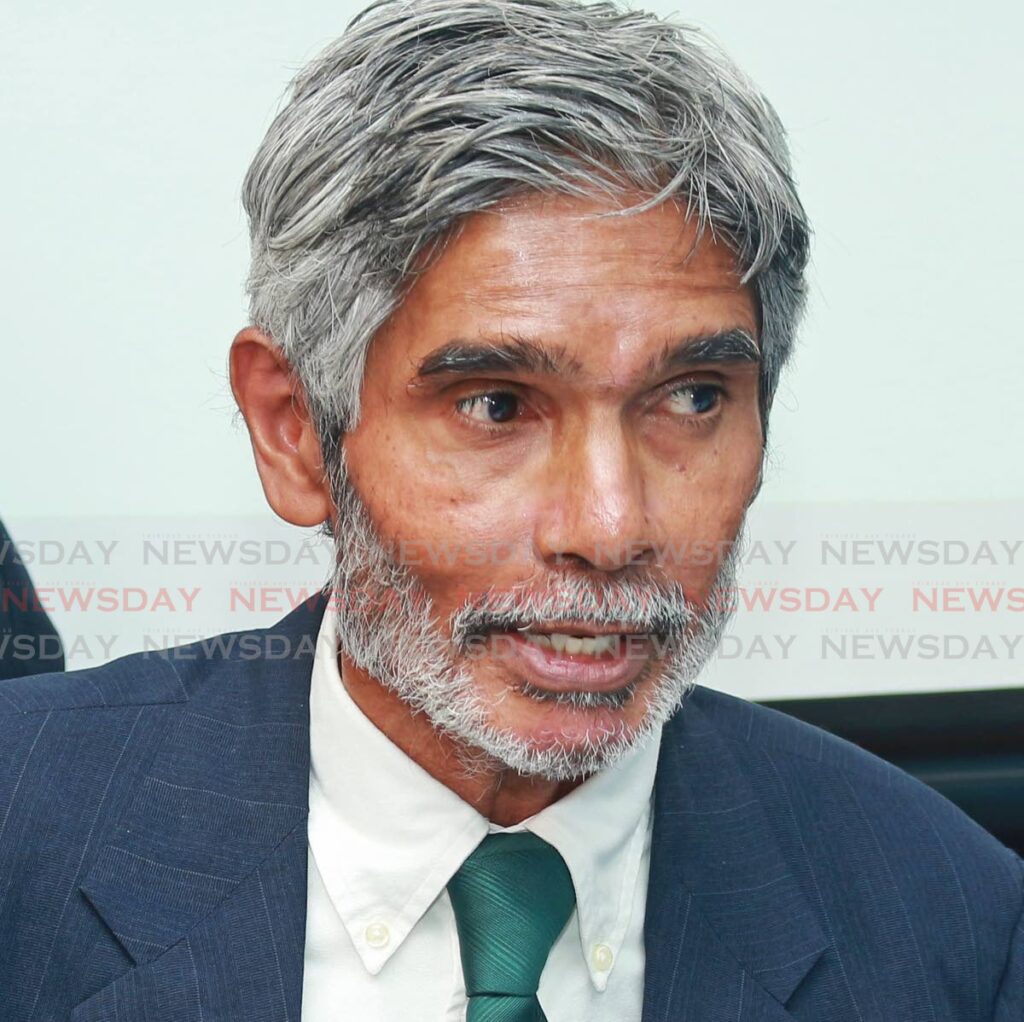A nursery story

WAYNE KUBLALSINGH
IN EARLY 2018, I became aware that the Government was planning to build 12 eight-storey housing blocks on the St Augustine Nurseries in Curepe. Cabinet, by Minute No 1376, dated August 3, 2017, had agreed to the transfer a segment of nurseries land to the Housing Development Corporation (HDC).
The 17.4 acres of farmland runs alongside the Curepe Main Road for approximately 542 yards, and encroaches into the nurseries for 155 yards. It was land that I had long been eyeing. I felt that if I ever came into a position of leadership I would use such assets, plus hills, forests, private and public lands, to build a vitamin revolution, boost fruit and tree crop cultivation, to stem the copious flow of our citizens towards our chronically burdened hospitals.
There was significant opposition to the HDC project. The opposition party was up in arms. Former minister of agriculture Vasant Bharath took a leading role. The then director of agricultural services wrote to the permanent secretary at the Ministry of Agriculture:
“These prime agricultural lands (the River Estate Soils Series, Class 1) at the St Augustine Nurseries will be lost forever to high-rise concrete and steel structures which will have a negative impact on the environment, such as increased run-off, waste management, traffic, flooding and other issues…The Agricultural Services Division of the Ministry of Agriculture strongly advises against the location of housing units on this land.”
Having long-eyed the nurseries, and appreciating its considerable economic value – it was established by the British colonial government in the early 1930s, part of a grand plan for the collection, conservation and dissemination of tropical plant species and products globally – I spoke out at an HDC consultation. I pleaded that an environmental impact assessment (EIA) ought to be done to properly determine the impacts of the project on the economy and functions of the nurseries. However, on September 14, 2018, the EMA awarded a certificate of environmental clearance (CEC) to the HDC without requiring an EIA.
To challenge or not to challenge? That was the question. In all the state projects that I have challenged, in Chatham, La Brea, Otaheite, Pranz Gardens, Claxton Bay, Savonetta, Debe to Mon Desir, Arima, among others, the communities had invited me. I had never left my relatively safe and sound job and abode to challenge projects without the invitation of local leadership and groups in communities.
I was now living hand-to-mouth. My employment had been terminated by the university in 2013. My bookbinding and publishing firm, the Greentree Press, had become insolvent; a hunger strike and disconnection from state utilities, plus a renewed bout of rheumatoid arthritis had halted it. I had several other matters on my plate, plus 11 arrest charges, plus no source of income.
There was a three-month deadline from September 14, 2018, to mount a legal challenge. I did not see the opposition party mounting a challenge. Nor the professional agricultural groups. Time was going. I met with attorneys. A legal challenge would cost $300,000 for starters. I decided to be my own advocate and mount a challenge.
I found four professionals in the fields of botany, fluvial hydrology, crop science and farming and recorded their findings in affidavits. I enlisted my sister, attorney Judy Kublalsingh, to help with formal filing. On the deadline date, December 15, 2018, I challenged, along with Shiraz Khan, the decision of the EMA to grant a CEC to the HDC without the requirement of an EIA.
My legs paid the major cost of the challenge. The frequent runabouts to expert witnesses, to photocopy, to file, to attorneys. Mercifully, attorneys Kiel Taklalsingh and Rajiv Sochan stepped in to save my embattled legs. A telling blow to my legs came when I learnt that there were surveyors in the nurseries, after the court had granted us leave to file for judicial review, and ruled that no works proceed pending the hearing of our application. The nurseries were out of bounds to the public. I could find no one to go discover the surveyors with me.
One wet day, I drove straight into the compound, past the guard and admin buildings, into the depths of orchard groves. I walked in search of the surveyors, hundreds of metres up and down the canals between the orchards. My legs did not like it one bit. Jumping over canals, the deep muddy footholds. Eventually, I found them. Three surveyors. I handed over the court’s ruling, took photos, politely informed them why I was there. They seemed furtive, defensive, and packed up. On my way out, the nurseries guard threatened a mouthful of lock-up. However, my legs no longer found their proper selves.
In November, after giving up on the labyrinthine public hospitals to save my legs, I accepted the sponsorship of my siblings to replace both my knees at Westshore Private Hospital. I could walk no more. I got final best guidance from Dr Peter Poon King. Surgery was performed by the eminent surgeon Dr Marlon Mencia on December 9, and a team of affable and efficient nurses and staff.
Throughout my hospitalisation, my mind was focused on the court’s final ruling scheduled for December 13. The nurseries never left my mind. However, my chance to dress up, proper jacket above, bandaged knees below, was quashed. The court’s decision was rescheduled to January.


Comments
"A nursery story"